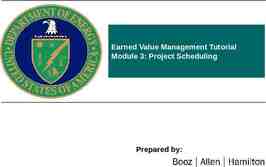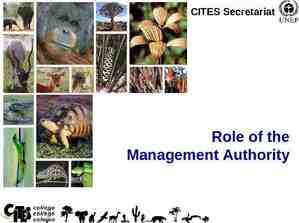Managing Marketing Information To Gain Customer Insights Chapter 4
30 Slides249.50 KB

Managing Marketing Information To Gain Customer Insights Chapter 4

Rest Stop: Previewing the Concepts 1. 2. 3. 4. 5. Explain the importance of information in gaining insights about the marketplace and customers. Define the marketing information system and discuss its parts. Outline the steps in the marketing research process. Explain how companies analyze and use marketing information. Discuss the special issues some marketing researchers face, including public policy and ethics issues. Copyright 2011, Pearson Education Inc. Publishing as Prentice-Hall 4-2

First Stop Understanding Tide’s Consumers Market Research Goal: Use market research to understand and cultivate the deep connections that Tide has with its core consumers. Research Technique: Twoweek customer immersion experience, working, shopping, talking with women about lives, needs, and feelings. Insights: Women are emotional about clothing and care for them well because they are filled with stories, feelings, and memories. Implementation Copyright 2011, Pearson Education Inc. Publishing as Prentice-Hall Advertising: Award-winning “Tide Knows Fabrics Best” ad campaign sent message that Tide let women focus on life’s important things and did not focus on traditional side-by-side cleaning comparisons. Results: 7% market share growth resulted after campaign implementation; Tide holds 43% of detergent market. Key to Success: Using research to understand the true nature of customer relationship and shape it provides real value. 4-3

The Importance of Marketing Information and Customer Insights Companies need information about their: Customers’ needs Marketing environment Competition Marketing managers do not need more information, they need better information that provides true customer insights, which are useful for decision making. Copyright 2011, Pearson Education Inc. Publishing as Prentice-Hall 4-4

Customer Insights Customer insights: Fresh understanding of customers and the marketplace derived from marketing information that become the basis for creating customer value and relationships. Firms use customer insights to develop competitive advantage. Customer insight teams are replacing traditional market research departments. Insights stem from many sources. Copyright 2011, Pearson Education Inc. Publishing as Prentice-Hall 4-5

Marketing Information System Marketing information system (MIS): Consists of people and procedures for assessing information needs, developing the needed information, and helping decision makers to use the information to generate and validate actionable customer and market insights. The MIS helps managers to: 1. 2. 3. Assess information needs Develop needed information Analyze and use information Copyright 2011, Pearson Education Inc. Publishing as Prentice-Hall 4-6

Assessing Information Needs A good MIS balances the information users would like against what they really need and what is feasible to offer. Sometimes the company cannot provide the needed information because it is not available or due to MIS limitations. MIS efforts are costly. Firms must decide whether the value of the insights gained from more information is worth the cost. Copyright 2011, Pearson Education Inc. Publishing as Prentice-Hall 4-7

Developing Marketing Information Internal databases: Electronic collections of consumer and market information obtained from data sources within the company network. EX: Web site usage by customers. Competitive marketing intelligence: Systematic collection and analysis of publicly available information about consumers, competitors, and developments in the marketing environment. EX: Annual reports; Brand discussions on blogs, etc. Marketing research: Systematic design, collection, analysis, and reporting of data relevant to a specific marketing situation facing an organization. EX: Focus group studies. Copyright 2011, Pearson Education Inc. Publishing as Prentice-Hall 4-8

Marketing Research Process The marketing research process involves: Defining the problem and research objectives. Developing the research plan for collecting information. Implementing the research plan—collecting and analyzing the data. Interpreting and reporting the findings. Copyright 2011, Pearson Education Inc. Publishing as Prentice-Hall 4-9

Defining Problem and Objectives Defining the problem is often the most difficult step of the research project. Research objectives may include: Exploratory research: Gathering preliminary information that will help define the problem and suggest hypotheses. Descriptive research: Generating information to better describe marketing problems, situations, or markets. Causal research: Testing hypotheses about cause-and-effect relationships. Copyright 2011, Pearson Education Inc. Publishing as Prentice-Hall 4 - 10

Developing the Research Plan Requires: Determining the exact information needed. Developing a plan for gathering it efficiently. Presenting the written plan to management. The research plan outlines: Sources of existing data. Specific research approaches. Contact methods. Sampling plans. Instruments for data collection. Copyright 2011, Pearson Education Inc. Publishing as Prentice-Hall 4 - 11

Developing the Research Plan Research objectives must be translated into specific information needs. Information needs might include detailed customer characteristics, usage patterns, retailer reactions, sales forecasts, or other information. Research plan should be presented in a written proposal. Research plans may outline need for secondary data and primary data. Copyright 2011, Pearson Education Inc. Publishing as Prentice-Hall 4 - 12

Gathering Secondary Data Secondary data: Information that already exists somewhere which has been collected for another purpose. Common sources of secondary data: Internal databases Commercial data services Government sources Copyright 2011, Pearson Education Inc. Publishing as Prentice-Hall 4 - 13

Secondary Data Advantages: Available more quickly and at a lower cost than primary data. Can lead to information that an individual firm could not gather itself. Disadvantages: Copyright 2011, Pearson Education Inc. Publishing as Prentice-Hall Desired information may not exist as secondary data. Secondary data must be carefully evaluated for relevancy, accuracy, currency, and impartiality. 4 - 14

Primary Data Collection Secondary data rarely provides all of the necessary information, forcing firms to collect primary data. Primary data: Consists of information collected for the specific purpose at hand. Primary data must be relevant, accurate, current, and unbiased. Copyright 2011, Pearson Education Inc. Publishing as Prentice-Hall 4 - 15

Primary Data Collection Designing a primary data collection plan involves making decisions related to the: Research approach: Observation, survey, or experiment Contact methods: Mail, telephone, personal, or online Sampling plan: Sampling unit, sample size, and sampling procedure Research instruments: Questionnaire or mechanical instruments Copyright 2011, Pearson Education Inc. Publishing as Prentice-Hall 4 - 16

Observational Research The gathering of primary data by observing relevant people, actions, and situations. Can obtain information that people are unwilling or unable to provide. Cannot be used to observe feelings, attitudes, and motives, and long-term or infrequent behaviors. Ethnographic research: Trained observers watch and interact with consumers in their “natural habitat.” Yields richer understanding of consumers. Copyright 2011, Pearson Education Inc. Publishing as Prentice-Hall 4 - 17

Survey Research Survey research: Gathers primary data by asking people questions about their knowledge, attitudes, preferences, and buying behavior. Most widely used method for primary data collection. Best suited for gathering descriptive information. Copyright 2011, Pearson Education Inc. Publishing as Prentice-Hall 4 - 18

Experimental Research Experimental research: Gathering primary data by selecting matched groups of subjects, giving them different treatments, controlling related factors, and checking for differences in group responses. Best suited for explaining cause-andeffect (causal) relationships. Copyright 2011, Pearson Education Inc. Publishing as Prentice-Hall 4 - 19

Contact Methods Mail surveys Telephone surveys Personal interviews: Individual interviewing Focus group interviewing Online marketing research: Internet surveys and online panels Experiments Online focus groups Copyright 2011, Pearson Education Inc. Publishing as Prentice-Hall 4 - 20

Sampling Plan Sample: Segment of the population selected to represent the population as a whole. Sampling requires three decisions: Who is to be surveyed? Selecting the sampling unit. How many people should be surveyed? Referred to as sample size. How should the people in the sample be chosen? Describes the sampling procedure. Probability vs. nonprobability samples. Copyright 2011, Pearson Education Inc. Publishing as Prentice-Hall 4 - 21

Research Instruments Questionnaire decisions: What questions to ask? Form of each question? Closed-ended Open-ended Wording? Ordering? Mechanical devices: People meters, checkout scanners, eye tracking devices, neuromarketing. Copyright 2011, Pearson Education Inc. Publishing as Prentice-Hall 4 - 22

Implementing the Research Plan Collecting the data: Most expensive phase Subject to error Processing the data: Check for accuracy Code for analysis Analyzing the data: Tabulate results Compute statistical measures Copyright 2011, Pearson Education Inc. Publishing as Prentice-Hall 4 - 23

Interpreting and Reporting Findings Interpret the findings Draw conclusions Report to management: Present findings and conclusions that will be most helpful to decision making. Copyright 2011, Pearson Education Inc. Publishing as Prentice-Hall 4 - 24

Analyzing and Using Marketing Information Customer relationship management (CRM): Managing detailed information about individual customers and carefully managing customer “touch points” in order to maximize customer loyalty. Copyright 2011, Pearson Education Inc. Publishing as Prentice-Hall 4 - 25

Analyzing and Using Marketing Information Many companies utilize CRM. Captures customer information from all sources Analyzes it in-depth Applies the results to build stronger relationships Companies look for customer touch points. CRM analysts develop data warehouses and use data mining techniques to find out information about customers. Findings may lead to new marketing opportunities. Copyright 2011, Pearson Education Inc. Publishing as Prentice-Hall 4 - 26

Customer Relationship Management (CRM) Benefits of CRM: Ability to offer better customer service and develop deeper customer relationships. Pinpoint and target high-value customers more effectively. Enhances the firm’s ability to cross-sell products and develop offers tailored to customers. Copyright 2011, Pearson Education Inc. Publishing as Prentice-Hall 4 - 27

Distributing and Using Marketing Information Marketing information systems (MIS) must make information readily available for decision making: Routine information for decision making. Non-routine information for special situations. Intranets and extranets facilitate the information sharing process. Copyright 2011, Pearson Education Inc. Publishing as Prentice-Hall 4 - 28

Other Marketing Information Considerations Small businesses and nonprofit organizations can also benefit from marketing research insights. International marketing research is growing but presents unique challenges. Misuse of marketing research can harm consumers. Public policy and ethics in marketing research is concerned with: Intrusions on consumer privacy Misuse of research findings Copyright 2011, Pearson Education Inc. Publishing as Prentice-Hall 4 - 29

Rest Stop: Reviewing the Concepts 1. 2. 3. 4. 5. Explain the importance of information in gaining insights about the marketplace and customers. Define the marketing information system and discuss its parts. Outline the steps in the marketing research process. Explain how companies analyze and use marketing information. Discuss the special issues some marketing researchers face, including public policy and ethics issues. Copyright 2011, Pearson Education Inc. Publishing as Prentice-Hall 4 - 30






